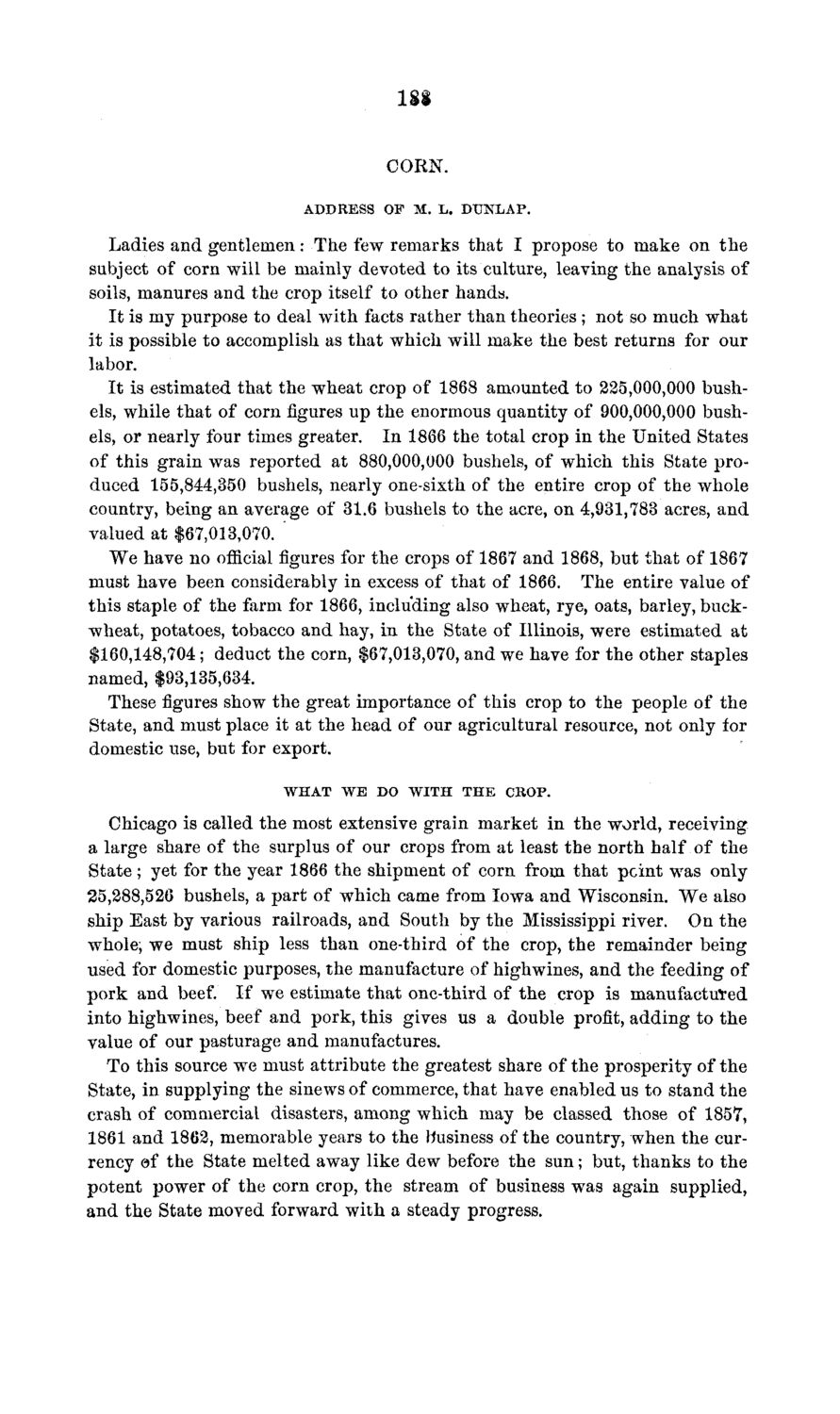| |
| |
Caption: Board of Trustees Minutes - 1869
This is a reduced-resolution page image for fast online browsing.

EXTRACTED TEXT FROM PAGE:
18$ CORN. ADDRESS O F M. L . D U N X A P . Ladies and gentlemen: The few remarks that I propose to make on the subject of corn will be mainly devoted to its culture, leaving the analysis of soils, manures and the crop itself to other hands. It is my purpose to deal with facts rather than theories ; not so much what it is possible to accomplish as that which will make the best returns for our labor. It is estimated that the wheat crop of 1868 amounted to 225,000,000 bushels, while that of corn figures up the enormous quantity of 900,000,000 bushels, or nearly four times greater. In 1866 the total crop in the United States of this grain was reported at 880,000,000 bushels, of which this State produced 155,844,350 bushels, nearly one-sixth of the entire crop of the whole country, being an average of 31.6 bushels to the acre, on 4,931,783 acres, and valued at $67,013,070. " We have no official figures for the crops of 1867 and 1868, but that of 1867 must have been considerably in excess of that of 1866. The entire value of this staple of the farm for 1866, including also wheat, rye, oats, barley, buckwheat, potatoes, tobacco and hay, in the State of Illinois, were estimated at $160,148,704; deduct the corn, $67,013,070, and we have for the other staples named, $93,135,634. These figures show the great importance of this crop to the people of the State, and must place it at the head of our agricultural resource, not only for domestic use, but for export. W H A T W E DO W I T H T H E CROP. Chicago is called the most extensive grain market in the world, receiving a large share of the surplus of our crops from at least the north half of the State ; yet for the year 1866 the shipment of corn from that point was only 25,288,526 bushels, a part of which came from Iowa and Wisconsin. We also ship East by various railroads, and South by the Mississippi river. On the whole; we must ship less than one-third of the crop, the remainder being used for domestic purposes, the manufacture of highwines, and the feeding of pork and beef. If we estimate that one-third of the crop is manufactured into highwines, beef and pork, this gives us a double profit, adding to the value of our pasturage and manufactures. To this source we must attribute the greatest share of the prosperity of the State, in supplying the sinews of commerce, that have enabled us to stand the crash of commercial disasters, among which may be classed those of 1857, 1861 and 1862, memorable years to the business of the country, when the currency of the State melted away like dew before the sun; but, thanks to the potent power of the corn crop, the stream of business was again supplied, and the State moved forward with a steady progress.
| |